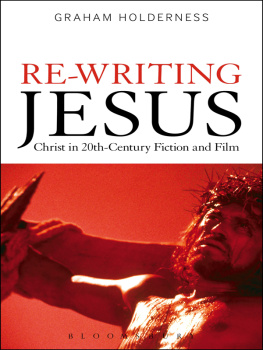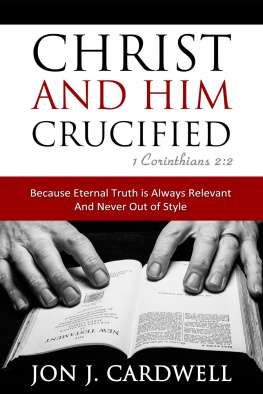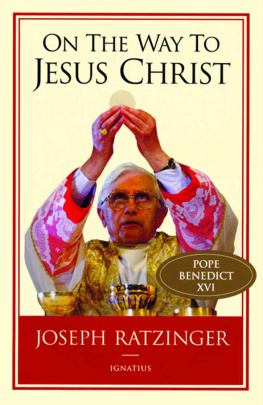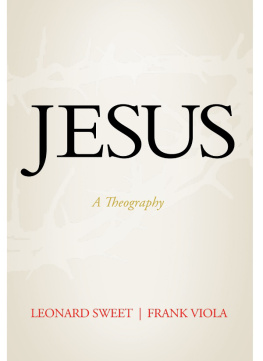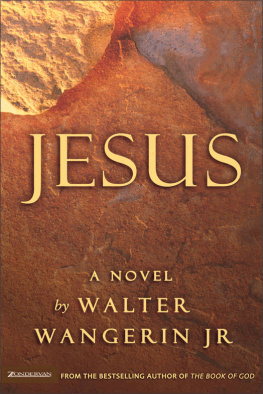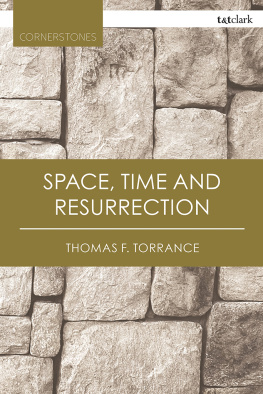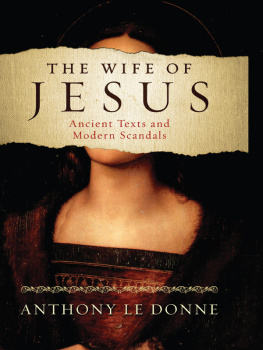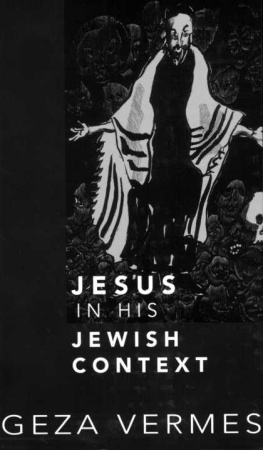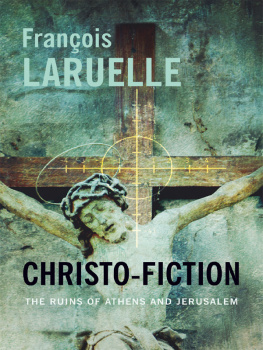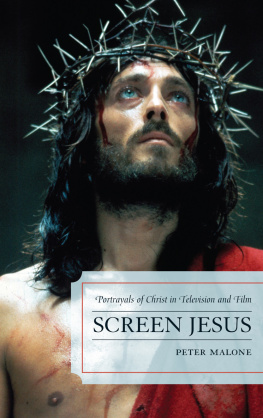Re-Writing
Jesus
For Father Kevin Morris
On the 25th anniversary of his priesting
ALSO AVAILABLE FROM BLOOMSBURY
Nine Lives of William Shakespeare, Graham Holderness
The Late Walter Benjamin, John Schad
Dante and the Sense of Transgression, William Franke
Re-Writing
Jesus
Christ in 20th-Century
Fiction and Film
Graham Holderness

CONTENTS
Earlier and shorter versions of some chapters were published as: Half God, half man: Kazantzakis, Scorsese, and The Last Temptation, Harvard Theological Review, 100: 1 (2007), pp. 4764; Word and Image: Burgess, Zefirelli and the Man of Nazareth, in Reading Spiritualities: Constructing and Representing the Sacred, eds D. Llewellyn and D. F. Sawyer (Ashgate, 2008), pp. 20522; Jim Crace, Quarantine and the Dawkins Delusion, Critical Survey, 22: 3 (2010), pp. 6991; and Animated Icons: Narrative and Liturgy in The Passion of the Christ, Literature and Theology, 19: 4 (Oxford University Press, December 2005), pp. 384401. I am grateful to editors and publishers for permission to reproduce this material in revised form.
I
Dan Browns The Da Vinci Code, published in 2003, had by 2009 sold 80 million copies worldwide. This appears to mean, prima facie, that astonishing numbers of readers have revealed an interest in conspiracy theory, cryptography and appallingly bad writing. It also appears to indicate, however, that those millions of readers have taken the trouble to engage with fundamental issues of Christian theology and history: such as the Incarnation; Gnosticism and orthodoxy; canonicity and apocrypha; ecclesiology; the apostolic succession none of which are headline topics in contemporary media or fiction. The film of the novel was the second-highest grossing movie of 2006 (after Pirates of the Caribbean: Dead Mans Chest).
Since Dan Browns attitude to what he represents as the church, and Christian orthodoxy, is systematically hostile, this mass readership and spectatorship can easily be interpreted as an endorsement of secularization, highlighting the decline of the church, or the relativizing of Christianity among other world faiths and varieties of humanism. Or it can be taken to demonstrate that there remains, all over the world, a huge interest in, and appetite for, information, knowledge, imagery and narrative about and around Christianity, its historical origins and foundational texts, its modes of organization and tradition, its literature and ideas.
Above all, there is a need for a reliable source of information and commentary on the representations of Christianity that constitute knowledge of Christianity for millions of people. If Christian church attendance and traditional religious education are currently in decline in the West, then people are deriving their perceptions of Christianity not from direct acquaintance with the Bible or from ecclesiastical dogma, but from the cultural
Writing, performance and visualization of Christianity have been going on now for over two thousand years, producing an immensely varied, diverse and complex tradition of representation and appropriation. Fictional and filmed version of the New Testament story still command audiences. It is possible that these traditions and interventions penetrate deeper into popular religious mentality than church teaching, or formal religious instruction. These versions of Christ and Christianity can be produced by Christians of various denominations, or exponents of other faiths, or agnostics or atheists. They are not controlled or limited by church authority, academic theology or systems of orthodoxy.
The Da Vinci Code debate is an instructive one. Browns fiction simultaneously claims and disclaims pretensions to truth and fictionality. The Da Vinci Code purports to reflect historical fact, while operating in an absurdly surreal territory of manifest artifice. Churches have sought to reclaim Browns territory as their own, correcting his false and distorted impressions. Religious scholars and educators have painstakingly pointed out the errors and absurdities in the fiction. In each case Dan Browns fiction is challenged on the basis of a claim to theological or ecclesiastical truth. But ironically these truth-claims seem less powerful for many people than the persuasions of fiction.
There are a number of reasons for this. Different Christian denominations appeal to different theological truths that inevitably conflict with one another, and may for the curious bystander merely cancel one another out. The lure of conspiracy theory induces scepticism about all defensive truth-claims, which always already seem cover-ups masquerading as truth. Above all, there is a failure to grasp the extent to which all religion does consist very largely of artifice, representation and fiction. The pulp fiction novelist and the popular film-maker may be wiser in this respect than many much more learned and eloquent apologists.
II
When, in the last few years, successful and popular authors such as Anne Rice, Philip Pullman, Jeffry Archer, Colm Toibin, When these works appear, they seem to be read in a vacuum. Toibins novella The Testament of Mary (the Mary in question being the mother of Jesus), was a strong contender for the Man Booker Prize. Much emphasis was laid by reviewers on the originality of the novels point-of-view, Marys story having never, allegedly, been fictionalized before as first-person narrative. Yet anyone acquainted with the literature would be aware that a similar Marian testimony is one of the monologues of Canadian novelist Nino Riccis book Testament (Toronto: Doubleday, 2002).
The Jesus-novel tradition has attracted both major and minor writers in English, as well as authors writing in other languages. I have focused in this study mainly on a group of novels by major writers that exploit to the full the complex potentialities of the form: Nikos Kazantzakiss The Last Temptation, Anthony Burgesss Man of Nazareth and Jim Craces Quarantine. I have subjected each of these texts to a full critical analysis and appraisal. The Introduction sets the scene by providing briefer discussions of the traditions foundational texts, Ernest Renans Vie de Jesus (1863), and George Moores The Brook Kerith (1916). I have then traced the evolution of the tradition via two other influential examples: D. H. Lawrences The Man who Died (1929), and Robert Gravess King Jesus (1946). My subject is, if you will, and according to a wide scholarly consensus, the great tradition of Jesus-fiction.
The Jesus-novel form originally grew out of nineteenth-century biblical criticism and philosophical scepticism about the divinity of Christ. An important precursor of the tradition was French thinker Strausss book applied the methods of biblical criticism to the life of Jesus, detaching the historical Jesus from the divine Christ, but did not actually make the breakthrough into modern biography. He provided the materials required for the construction of a historical biography, rather than a historical biography proper. Leben Jesu is much more a work of historical scholarship and theological argument than it is a narrative of the life of Christ.
Renans Vie de Jesus retains the full panoply of textual scholarship and biblical criticism, but renders this material ancillary to the biographical narrative, placing much of it footnotes rather than in his discursive text. Moreover, he repositions the role of the historical element, by locating the narrative firmly in the concrete historicity of the actual places where the events of the gospels occurred, much in the manner of a nineteenth central realist writer like Flaubert. Renan made this explicit in his Preface:
Next page
